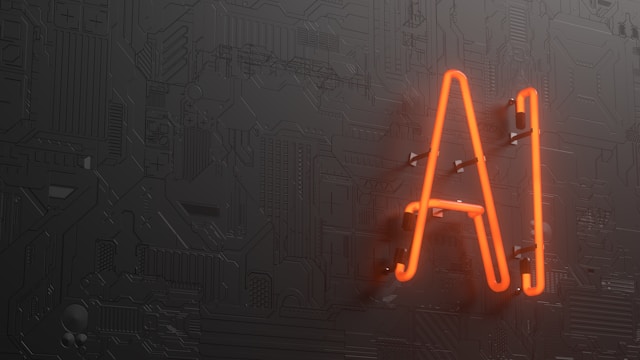AI Recruitment, Healthcare, and Shift Scheduling Made Easy and Efficient

Managing healthcare shift schedules is messy, urgent, and nonstop.
You're juggling last-minute changes, no-shows, and burnout, while still trying to hire fast. That’s where AI recruitment tools like HRMLESS step in to simplify the chaos. From automated scheduling to AI-powered screening, these tools help you fill shifts faster, avoid mistakes, and reduce stress across your team.
Forget endless emails, manual spreadsheets, or chasing candidates for their availability. With HRMLESS, interviews get booked instantly, no-shows are reduced, and shift gaps shrink. AI handles the scheduling details so that you can focus on care, not calendars.
In this blog, we will talk about:
- How AI improves hiring speed and shift scheduling in healthcare
- Benefits of automation for reducing burnout and staffing gaps
- Best practices for using AI to manage schedules with less stress
Let’s dive into how AI helps healthcare recruiters hire smarter and schedule faster, without the chaos.
Understanding AI Recruitment in Healthcare
Healthcare hiring is complicated and constantly on a deadline. You need tools that help you find qualified candidates fast, while keeping things fair and organized. AI steps in by automating repetitive tasks and making it easier to connect with the right people.
What Is AI Recruitment?
AI recruitment means using software powered by artificial intelligence to handle parts of the hiring process. It sifts through resumes, scores candidates for fit, and schedules interviews automatically. As a result, you spend less time on tedious work and are less likely to overlook good talent.
With AI tools like ours, you’re able to engage candidates around the clock through automated interviews and messaging. These systems play nicely with your existing ATS, so your workflow doesn’t get derailed. Instead of drowning in paperwork, you must focus on building authentic connections.
Challenges in Traditional Healthcare Hiring
Healthcare hiring has its own set of headaches. High turnover, shift work, and urgent staffing needs make finding reliable people a constant struggle. Manual scheduling often leads to shift gaps or overlaps, and recruiters waste time chasing candidates for availability.
All this back-and-forth slows everything down and leads to more no-shows. Screening huge piles of applications by hand can also introduce bias, so great healthcare workers might slip through the cracks, and shifts stay open longer than they should.
Benefits of AI for Healthcare Talent Acquisition
AI recruitment tools are a real help in healthcare. They automate interview scheduling across time zones and shifts, inviting only candidates who are actually interested. You can screen and score resumes in a snap, so spotting your top picks is easier.
Some perks:
- Save hours per hire by ditching manual busywork
- Reduce bias with data-driven scoring
- Scale your hiring without extra stress
- Get better candidates thanks to AI pre-screening
AI keeps candidates engaged with SMS and email nudges, and platforms like ours help you handle high-volume recruiting while keeping shifts filled with dependable staff.
AI-Driven Shift Scheduling Solutions
AI can take over the messiest parts of healthcare shift scheduling, matching staff availability, skills, and workload. That means less time spent sorting through spreadsheets, fewer mistakes, and better patient care. The tech adapts to changes quickly, so your team never gets left in the lurch.
How AI Schedules Healthcare Shifts?
AI checks staff skills, certifications, and availability to build fair schedules. It monitors labor rules and ensures no one gets overworked with too many shifts in a row. You avoid conflicts by letting the system balance hours across your team.
With intelligent automation, shifts get assigned fast, even if someone drops out at the last minute. You’ll get alerts if there’s a coverage gap. AI-driven tools like ours use data to match the right person to each role, so shifts stay filled and you see fewer missed hours.
Optimizing Staff Coverage with Machine Learning
Machine learning looks at old schedules and learns when you’re busiest. It tweaks shift patterns to ensure you have enough people during peak times. That helps cut overtime costs and keeps patient care steady. AI also learns what your team prefers and how they perform. It can suggest schedules that make people happier and more productive. When staff feel supported, turnover drops, and burnout isn’t as common.
There’s less paperwork, too. AI sends shift reminders through SMS or email, which helps keep everyone on the same page. Smarter coverage means your staff and patients are both better off.
Real-Time Scheduling Adjustments
Healthcare is unpredictable, so real-time scheduling is a must. AI watches attendance and workload all day. If someone calls in sick, the system quickly lines up the best replacement. That way, you don’t get stuck with shift gaps that stress everyone out. Automated tools send alerts and reschedule shifts without you having to step in. This helps you deal with emergencies or sudden demand spikes quickly. You always know who’s on and when.
With AI-powered scheduling, you can focus on patient care instead of chasing down schedules. It keeps things running and your team ready, no matter what curveballs come your way.
Integrating AI Recruitment With Shift Scheduling
Bringing AI into recruitment and shift scheduling means you fill healthcare roles faster and keep shifts covered. Automation reduces manual work, helps pick the right staff, and keeps coverage steady.
Seamless Onboarding and Staffing Processes
AI makes hiring and scheduling work together without the usual headaches. When you use AI platforms like HRMLESS, candidates get screened, scored, and scheduled automatically. Once you hire someone, the system can assign shifts based on when they’re available.
This cuts out mistakes from manual entry and speeds up the whole process from application to first day. Automated tools handle the hassle of finding open times, so you’re not constantly chasing people. New hires get started faster because scheduling and staffing are connected. Shifts fill quickly, and you can trust AI to handle the timing.
Data-Driven Staff Matching
AI reviews everything, including skills, certifications, past performance, and availability, to match healthcare workers to the right shifts. You get recommendations that actually make sense, not random guesses.
You're less likely to overstaff or put the wrong person on a shift. AI focuses on candidates likely to accept and show up, so you waste less time. With our tool, you can immediately spot the best matches for critical shifts. The system scores candidates instantly, helping you focus on the right hires and keep care quality high.
Reducing Staffing Gaps in Healthcare
Staff shortages are risky in healthcare. AI recruitment and scheduling help prevent gaps by predicting and filling shifts before they become problematic. Automated reminders and follow-ups keep candidates in the loop, so you see fewer last-minute cancellations. That means less scrambling and more time to plan.
AI balances workloads and helps prevent fatigue, which keeps your staff happier and patient care steady.
Enhancing Workforce Management With AI
Managing healthcare shifts well means knowing when you need more people and following the rules. AI tools give you precise data and intelligent alerts, making scheduling easier and more accurate.
Predictive Analytics for Staffing Needs
AI looks at your past data to predict when you’ll need more or fewer staff. It checks things like patient volume, holidays, and who’s available. That way, you can schedule the correct number of nurses and doctors.
With AI, you avoid last-minute shortages and don’t pay for extra hours you don’t need. You also get a heads-up about shifts often short-staffed, so you can fix it before it’s a problem. This keeps patient care running smoothly and your team happier. Our tool uses AI to spot these trends, so you’re not just guessing staffing needs. The system can suggest schedules that fit both patient demand and what your staff prefers.
Compliance and Labor Law Considerations
Healthcare scheduling isn’t just about filling shifts; you’ve got to follow strict rules about hours, breaks, and overtime. AI keeps you in line by automatically checking your schedules against legal limits. This protects your organization and keeps staff from burning out. The AI flags any shift plans that break the rules before they cause trouble.
You can also set up custom rules for special departments or union contracts, so things stay fair and legal without you having to double-check everything. With tools like ours, you see fewer errors, less paperwork, and you can build compliant schedules much faster.
Improving Patient Care Through AI Recruitment and Scheduling
When you use AI for hiring and shift scheduling, you spend less time on admin and more time on what matters: patient care. The right people get hired faster, and schedules match both patient needs and staff availability. That helps prevent mistakes and keeps things moving.
Boosting Patient Outcomes
AI recruitment tools like ours find qualified healthcare workers fast by automating screening and ranking. You fill shifts with skilled people who actually fit, which lowers the risk of mistakes from understaffing or bad matches.
With AI-driven scheduling, shifts align with peak patient demand. The system considers skills, certifications, and preferences, putting the right staff in the right place at the right time. That means shorter wait times and better care. When coverage is steady, patients get consistent support, which is good for recovery times and satisfaction.
Elevating Employee Satisfaction
AI scheduling tools take the pain out of shift planning. Staff can see and pick shifts that work for them, helping them balance work and life. That means less burnout and fewer call-outs. Automating interview scheduling and candidate follow-ups saves your HR team a ton of time. They can focus on supporting employees and making the workplace better.
HRMLESS sends automated reminders to reduce no-shows and ghosting, making hiring less of a slog. When people feel valued and schedules are clear, they’re happier, and happy staff give better patient care.
Implementation Best Practices
AI can transform healthcare hiring and shift scheduling, if you know how to set it up right. Here are the best practices to follow:
- Define Staffing Needs Clearly: Start by mapping your staffing requirements and shift patterns to avoid scheduling errors.
- Automate Routine Tasks: Use AI for credential checks, candidate screening, and scheduling. It's faster and more reliable than manual work.
- Keep Candidates in the Loop: Automated SMS and email reminders reduce no-shows and improve communication.
- Integrate with ATS/HRIS: Connect your AI scheduling tool with existing systems for smoother workflows and organized data.
- Monitor in Real Time: Use dashboards to track delays, no-shows, or gaps so you can make quick adjustments.
- Leverage 24/7 Features: Options like AI interviews and scoring let candidates apply anytime and help you focus on top talent faster.
- Maximize Platform Capabilities: Tools like ours can fully automate screening, scoring, and scheduling to save time and stress.
- Train Your Team: Ensure staff understand the AI tools; better adoption means smoother operations and faster results.
By following these steps, your healthcare recruitment process becomes more efficient, reliable, and stress-free.
Future Trends in AI Recruitment and Healthcare Shift Scheduling
AI is shaking up healthcare shift scheduling, and it will only get smarter. Soon, automated scheduling will match staff to shifts based on skills, preferences, and availability, with barely any effort from you. You'll see AI tools handle tricky stuff like certifications and labor laws on their own. That means fewer scheduling mistakes and quicker fixes when things change.
AI-driven systems will offer 24/7 candidate interviews and scheduling. Healthcare pros can book or swap shifts any time, making handling busy periods or sudden changes easier. Another trend? Better integration with your current systems. AI platforms like ours will sync up with ATS and HRIS, keeping hiring and staff data in one place and always current.
Here’s what’s coming:
- Automated pre-screening to spot qualified candidates fast
- Scoring and filtering to surface your top picks
- Instant scheduling that cuts no-shows by inviting only engaged candidates
- SMS and email nudges to keep everyone in the loop
HRMLESS is already using these features with Nerva AI to make hiring smoother and quicker. Soon, you’ll probably see voice AI that lets candidates talk naturally during interviews, adding a human feel and saving you time. Healthcare scheduling is on its way to being more efficient, less stressful, and, honestly, more pleasant for everyone involved.
Final Thoughts
Healthcare staffing doesn’t have to feel like a never-ending puzzle. With the right AI recruitment tools, you can finally move faster, reduce burnout, and keep shifts fully staffed, without all the last-minute scrambles. Platforms like HRMLESS help you streamline hiring, automate scheduling, and stay compliant, all while giving your team room to focus on what matters most: patient care.
AI removes the pressure, so you can focus on people, not paperwork. Book a demo or start your free trial today to see how HRMLESS makes healthcare shift scheduling smarter, faster, and easier for everyone involved.
Frequently Asked Questions
AI can help you match shifts better, reduce mistakes, and save time when scheduling healthcare staff. Automated tools also make things fairer and keep schedules flexible as needs change.
How can AI improve shift scheduling for nurses and healthcare staff?
AI analyzes nurse availability, skills, and even personal preferences to create more balanced schedules. It spots conflicts, predicts staffing needs as they change, and helps reduce overtime. The idea is to keep patients safer and staff a little less frazzled.
What are the benefits of using a nurse schedule generator?
A nurse schedule generator takes much of the manual hassle out of the process and helps avoid scheduling mistakes. It’s quick to fill in gaps or swap shifts when things change at the last minute. You’ll probably notice fewer no-shows and better coverage overall.
Can you list some reputable healthcare Vendor Management Systems (VMS)?
You’ll find quite a few VMS options built for healthcare. These tools make it easier to manage contract and temp staff. They pull compliance, costs, and performance tracking together, all in one spot.
How does Maverick Medical AI enhance healthcare workforce management?
Maverick Medical AI attempts smarter staff allocation by forecasting patient volume and determining the kind of staff needed. It helps close scheduling gaps and makes resource planning less of a headache. Teams end up more prepared, which is never a bad thing.
What are the key features of Rightway Healthcare's platform for managing staff shifts?
Rightway gives staff real-time updates and lets them access schedules from anywhere. It matches shifts to skills and simplifies shift swapping, so there’s more flexibility. Automated alerts try to catch errors and missed shifts before they happen.
Are there any free or open-source tools for healthcare shift scheduling?
Yeah, there are actually a few free and open-source options out there. They usually cover the basics, scheduling, and letting folks swap shifts. These can be pretty handy for smaller teams, though honestly, they don’t offer the fancy AI automation you’d see in something like HRMLESS.
Featured
Subscribe to ournewsletter
Related posts
Explore the world of photography with our curated selection of
portfolio websites that showcase creativity and innovation.





